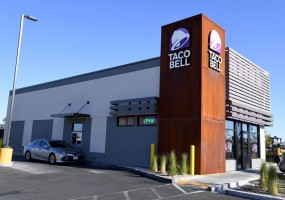
When a situation calls for keeping a large group fed, be it a convention or an industry event, the method by which those people is fed matters almost as much as what gets into their bellies. Think of these five approaches, many of which are used by veterans of the hospitality industry, when planning your next event. Keep reading as the experts at foodservicecompany.com explain more.
Street Festival
This not only works well for large scale consumption but carries the sort of nostalgia people may have for big gatherings of the past. This sort of endeavor involves stations for providing guests with food and drink as well as spots for activities common to street fairs. When planning a street fair, try to pair the identity of the fair with the food being served.
Communal Tables
The long tables of this approach help to foster conversations and enable networking while guests are served their food with the food serving as a centerpiece. Common comestibles for this sort of approach involve bread paired with butter and tapenades. While the bread and toppings serve as an appetizer, the main course is a protein served to each guest and side dishes placed in the center of each cluster of guests, similarly to the bread and butter. For another, more casual example, consider serving individualized salads within Mason jars and utilizing a lazy Susan plied with sandwiches.
Food Trucks
While food trucks were a major trend half a decade ago, they are still quite welcome in most communities. A row of food trucks is a great way to draw a crowd to a select area while also offering guests the chance to customize their orders in accordance with any sort of dietary or taste preferences.
Restaurant-Style
This involves an elevated kitchen in the middle of a large room, equipped with four different stations, each with their own menus. This excites guests because they get to see their custom order being made by professionals.
Action Stations.
Basically, the guests get to directly participate in the creation of their meal. As just one example, a Japanese eatery might have its chefs dressed as traditional Japanese cooks and offer guests a serving of bare ramen noodles. The guests are then given the freedom to personally select which ingredients to include along the way, be they proteins, mushrooms, vegetables, etc.; completing the dish by offering several types of piping hot broth to deluge the noodles and other ingredients with.
An action station excites more than just one sense in guests, offering a far richer experience than just sitting at a table while the chef slings a custom order of ramen back in the kitchen, beyond the range of the guests's eyes and nose. While your guests are already expecting that their food is going to be delicious, offering a personal and interactive touch to the presentation of that food can helps cement the idea of a quality dining experience. Some enterprises, like theme parks, have even gone a step beyond this sort of service by featuring a scavenger hunt of a menu; guests who successfully manage to find all of the items on the scavenger hunt were treated to some sort of reward, such as a free dessert.
It is worth noting that there is no reason why you should stick to just one of these approaches. In fact, you can can reap even great results by combining these approaches, such as interspersing action stations along the pathway of a fleet of food trucks that all happen to serve the sort of food necessary for something like a garlic festival.
* This is a contributed article and this content does not necessarily represent the views of foodworldnews.com









